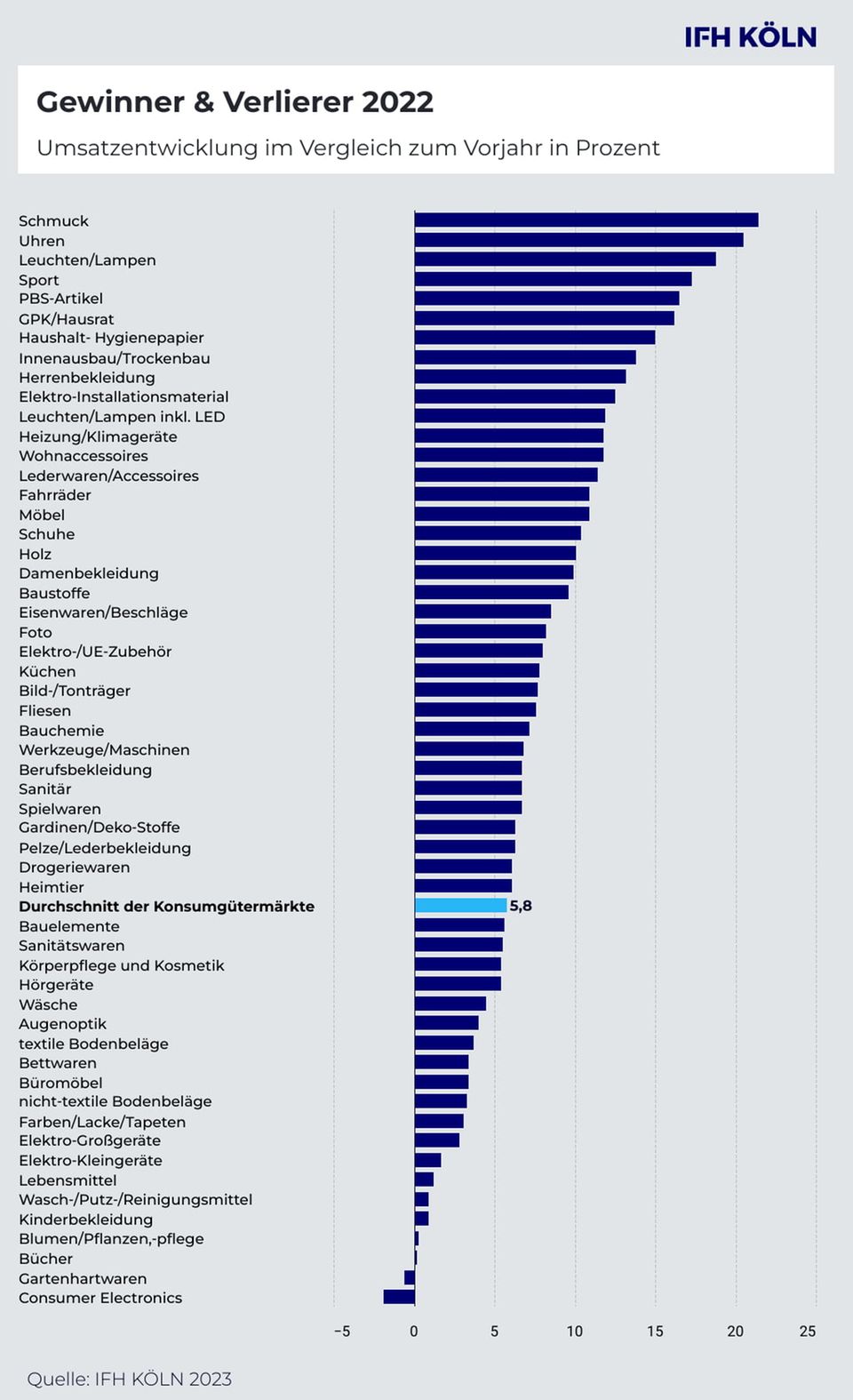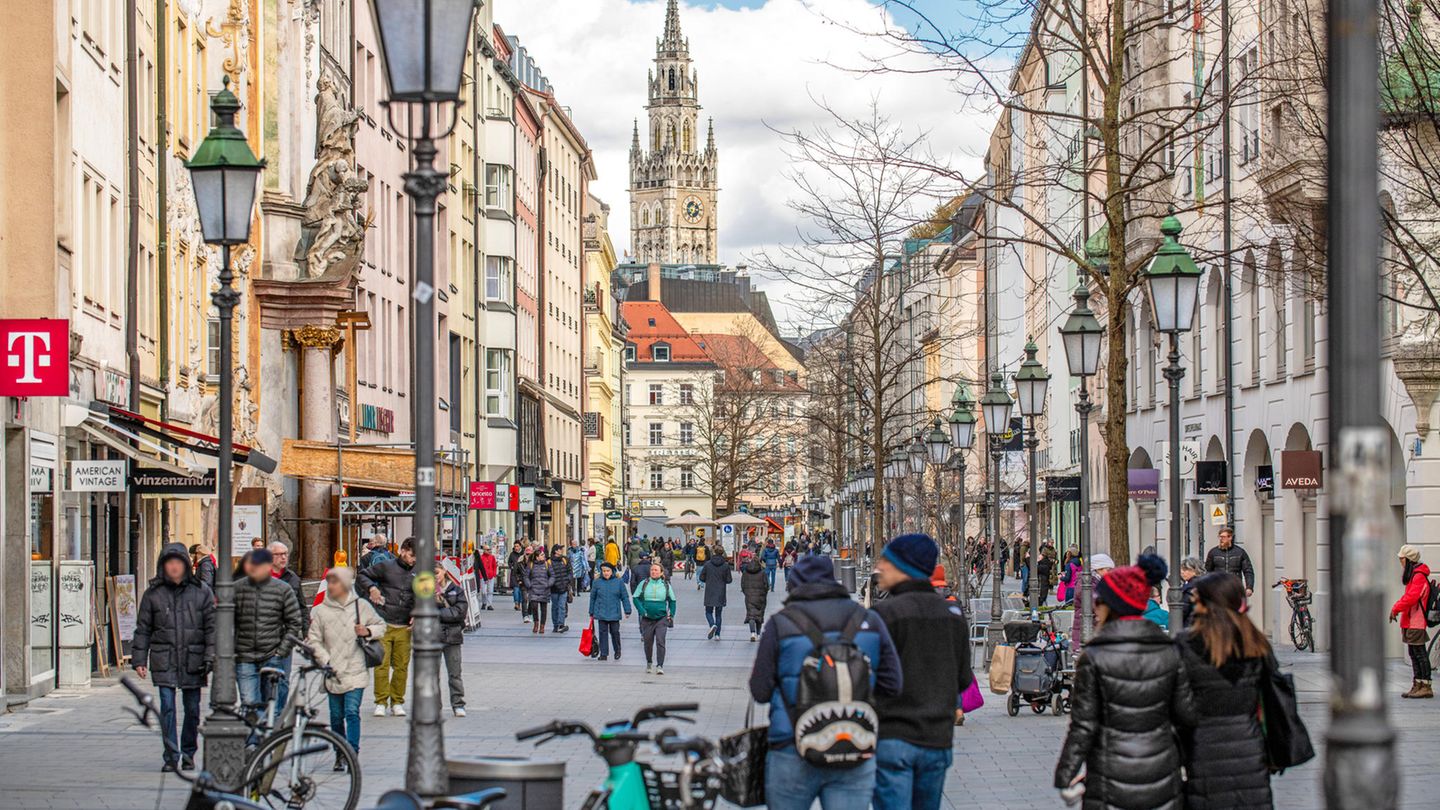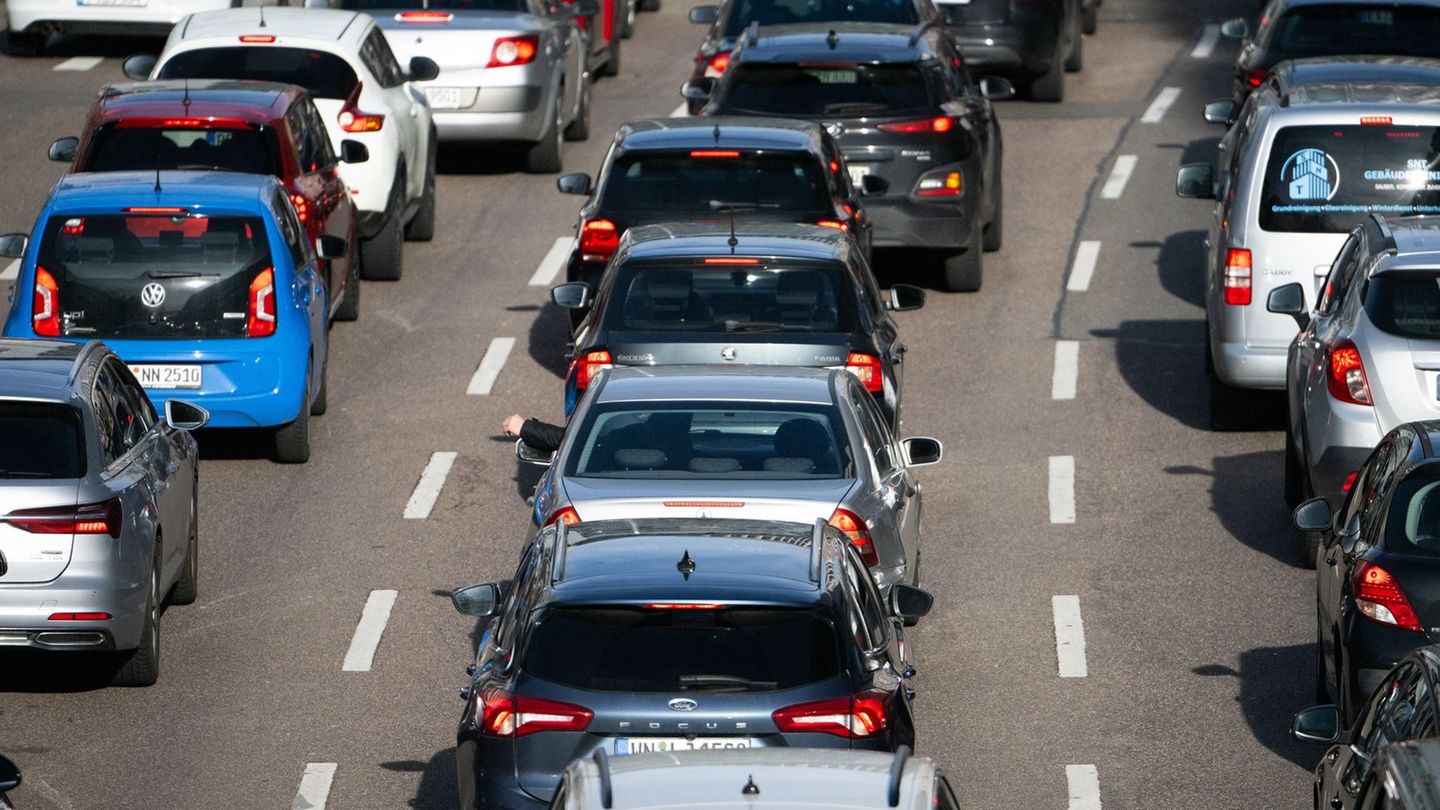What are retail customers spending their money on? According to a study, some traditional inner-city industries have recently caught up.
First the shops had to close due to the pandemic, now inflation is curbing customers’ desire to buy – these are challenging times for the retail trade. This shows how difficult the economic situation is for some retailers. However, according to a study by the market research company IFH Cologne, some typical inner-city sectors have recently gotten better again.
Based on official data, the IFH analyzed the sales development in 55 consumer goods markets from fashion to furniture. According to this, almost all of the sectors considered were able to record an increase in sales in 2022 – at least nominally. On average, market researchers put the increase at 5.8 percent. The average sales growth is thus below the general price development. If you had higher costs, you can of course have made less profit with more sales.
Some sectors were able to increase their sales significantly more, while others even had to accept declines. The range extends from plus 21.4 percent to minus 1.9 percent. All sales figures to private customers were considered, both in stationary business and in online trade.
Jewelry and watches more in demand
According to the IFH, sectors that have a strong presence in the city centers and have suffered particularly from the closures caused by the pandemic were able to make up some of the losses. The biggest sales winners in the ranking are the sellers of jewelry and watches – the market grew by more than 20 percent in each case. Luxury items were therefore in demand despite all the mood of crisis. Lamps and sporting goods were also among the winners last year.
In the fashion industry, sales of men’s clothing increased the most (plus 13 percent), with women’s fashion and shoes it was slightly less. For some fashion retailers, however, the market recovery was apparently not strong enough. In recent months, some well-known fashion and shoe chains – from Peek & Cloppenburg to Reno – have had to flee protective shield proceedings or file for bankruptcy. “Despite some positive sales developments, the sales level before the pandemic has not yet been reached in many markets,” says IFH expert Uwe Krüger. This also applies to the fashion industry.
Reno, P&C and co.
Wave of bankruptcies in fashion and shoe chains: These shops are all insolvent
According to the analysis, business with electronic items developed comparatively weakly. Sales of consumer electronics even declined in 2022 compared to the previous year. However, business has not collapsed here before. On the contrary: During the pandemic, home electronics were particularly in demand. And if you bought a new notebook in 2020 or 2021, you didn’t need a new one last year.

Consumers remain cautious
This year, too, many retailers have to continue to fight hard for customers. “Enormous price increases, especially in the energy and food sectors, mean that people are buying more carefully and – at least in some sectors – are cutting back on consumption,” says IFH expert Krüger.
The market researchers at GfK see it that way too. According to the GfK consumer climate study from the end of March, consumers’ mood for shopping has improved only slightly over the past six months. Many customers are still reluctant to shop because of inflation and the associated loss of purchasing power. GfK researchers predict that private consumption will make no contribution to improving the economic situation this year.
Source: Stern




